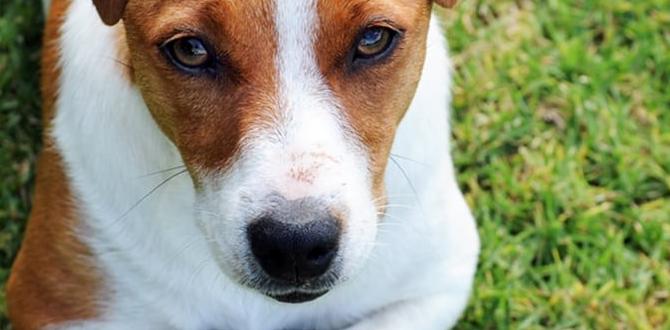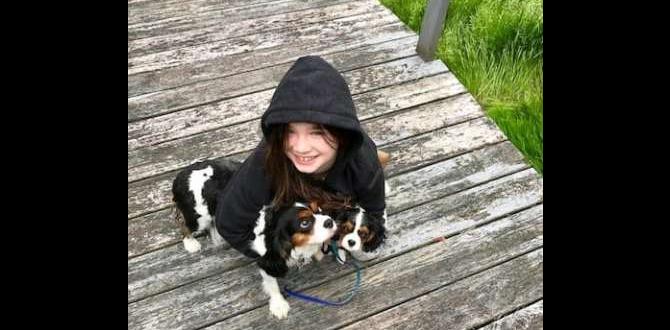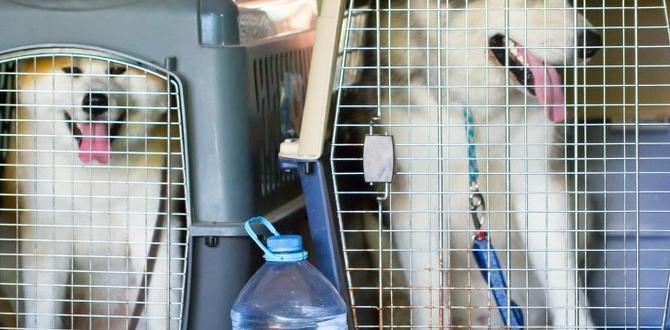Have you ever noticed your dog acting strangely? Maybe they’re humping a toy or even your leg. You might find it funny or strange, but there’s more to it. Understanding this behavior can help you and your dog. Let’s explore dog humping behavior step by step. This journey will uncover why dogs do this and how you can help.
Key Takeaways
- Humping is normal for dogs but may need redirection.
- Understanding dog humping behavior step by step is important.
- Dogs hump due to excitement, stress, or play.
- Training can reduce unwanted humping behavior.
- Observe your dog’s triggers for better management.
What Causes Dog Humping?
Dogs can hump for many reasons. It’s not always about dominance. Sometimes, they hump because they are excited. Other times, they do it due to stress or boredom. Puppies hump during play to explore their environment. Even older dogs can hump when they feel playful. Understanding humping involves knowing these causes.
- Excitement can trigger humping in dogs.
- Stress may lead a dog to hump objects.
- Boredom can cause this behavior too.
- Puppies often hump in play.
- Older dogs may hump when playful.
To manage humping, watch your dog’s behavior. Notice when and where they hump. If excitement triggers it, calm them down. If it’s stress, reduce the stressful situation. Training and redirection help too. Teach your dog commands like “sit” or “stay” to divert their attention.
Fun Fact: Dogs use body language to communicate their feelings.
Is Humping a Sign of Dominance?
Many people think humping means a dog is trying to dominate. While it can mean that, it’s not always the case. Dogs use humping to express many feelings, like excitement or stress. Imagine your dog playing and suddenly humping a toy. This might just mean they’re having fun, not trying to be the boss. Understanding your dog’s mood is key to knowing why they hump.
When Do Puppies Start Humping?
Puppies can start humping at a young age. It often begins around six to eight months old. This is when they explore their world. It’s a normal part of puppy development. Imagine a puppy in a park, playing with other dogs. They might hump during this playtime. It’s simply how they learn about their environment and interact with others.
Does Neutering Stop Humping?
Neutering can reduce humping in dogs. But it doesn’t always stop it completely. Imagine a dog named Max. Max was neutered but still humps his favorite blanket. This is because humping isn’t just about hormones. It’s also tied to behavior and emotion. Neutering helps but isn’t a perfect solution for all dogs.
How to Manage Dog Humping Behavior
Managing dog humping behavior involves patience and training. Start by observing when your dog humps. Is it when guests arrive? Or maybe during play? Once you know the triggers, you can work on redirection. Use commands like “sit” or “leave it” to divert their attention. Consistent training helps reduce humping over time.
- Observe when your dog starts humping.
- Identify triggers like guests or playtime.
- Use commands to redirect their focus.
- Practice consistency in training.
- Reward good behavior with treats or praise.
Reward your dog when they respond well to commands. Positive reinforcement is key. If your dog stops humping when you say “leave it,” give them a treat. Praise them to encourage more good behavior. Over time, your dog will learn to respond to your commands more quickly.
Fun Fact: Dogs respond well to positive reinforcement techniques.
Setting Boundaries with Your Dog
Setting boundaries with your dog is essential. Imagine a dog jumping on guests, trying to hump them. This can be embarrassing and uncomfortable. Teach your dog to respect personal space. Use commands like “off” or “down” to keep them from jumping. Setting clear rules helps your dog know what’s expected.
Consistency in Training
Consistency is crucial in training. If you let your dog hump sometimes but not others, they get confused. Consistently redirect them every time. Imagine training a dog with mixed signals. They won’t learn as fast because they don’t know what to expect. Being clear and steady helps your dog learn faster.
Using Positive Reinforcement
Positive reinforcement involves rewarding good behavior. When your dog listens to a command, reward them. This can be with treats or praise. Imagine a dog learning to “sit” instead of hump. Each time they listen, they get a treat. Over time, they’ll choose the good behavior for the reward. This method is effective and encourages learning.
Understanding the Emotional Side of Humping
Dogs have emotions just like people. Humping can be tied to their feelings. When dogs are anxious or excited, they may hump. Imagine a dog meeting a new friend at the park. The excitement might lead to humping. Understanding their emotions helps you manage behavior better. It’s important to be patient and kind.
- Dogs feel emotions similar to humans.
- Excitement or anxiety can lead to humping.
- Meeting new friends might trigger this behavior.
- Understanding your dog helps manage their actions.
- Patience and kindness are key in training.
Watch how your dog reacts in different situations. If they seem anxious, comfort them. If they’re excited, give them a chance to calm down. Understanding these emotional cues helps you support your dog better.
Fun Fact: Dogs can read our emotions and react accordingly.
How Dogs Show Emotions
Dogs are expressive creatures. They show emotions in many ways, such as wagging their tails. Imagine a dog greeting you after a long day. They wag their tail, excited to see you. Similarly, they might hump to show excitement or stress. Understanding these signals helps us connect with them better.
Dealing with Anxious Dogs
Anxious dogs need extra care. Imagine a dog scared of thunderstorms. They may start humping to cope with their fear. Comfort your dog during stressful times. Use soothing words or gentle petting. This helps them feel safe and may reduce unwanted behaviors like humping.
Encouraging Calm Behavior
Encouraging calm behavior in dogs is beneficial. Imagine a dog jumping around in excitement. Redirect their energy with a game or a walk. Use commands to help them focus. Rewarding calm behavior helps them choose it more often. Over time, your dog learns to control their excitement better.
Is Humping a Health Concern?
In most cases, humping is not a health concern. It’s a typical dog behavior. However, if it’s excessive, it might signal a problem. For example, urinary infections or skin allergies can cause discomfort. This may lead to increased humping. If you’re worried about your dog’s behavior, it’s best to consult a vet. They can check for health issues and offer advice.
- Humping is normal for most dogs.
- Excessive humping might indicate health issues.
- Possible causes include infections or allergies.
- Consult a vet if you have concerns.
- Regular check-ups help maintain dog health.
Regular vet visits ensure your dog stays healthy. If your dog starts humping more than usual, note any changes in their environment. This information can help the vet diagnose any issues quickly.
Fun Fact: Dogs have a strong sense of smell, often keener than humans.
When to Seek Veterinary Help
Knowing when to seek veterinary help is crucial. If your dog’s humping becomes frequent or obsessive, it’s time to consult a vet. Imagine a dog who suddenly humps all the time. There might be an underlying health issue. A vet can examine your dog and provide necessary treatments.
Common Health Issues in Dogs
Dogs can face various health issues. Common problems include infections, allergies, and joint pain. Imagine a dog with itchy skin from allergies. They might hump to relieve the itch. Regular vet visits help catch these problems early. Treatment can improve your dog’s comfort and behavior.
Maintaining a Healthy Lifestyle
Maintaining a healthy lifestyle for your dog is important. This includes a balanced diet and regular exercise. Imagine a dog with lots of energy. Without enough exercise, they may develop unwanted behaviors like humping. Regular activity keeps dogs happy and healthy.
Using Redirection to Manage Humping
Redirection is a useful tool in managing dog humping. When your dog starts to hump, redirect their attention. Use a favorite toy or a treat to distract them. Teach commands like “leave it” or “come.” This helps shift their focus from humping to something else. Over time, your dog learns better ways to express themselves.
- Redirection can manage unwanted humping.
- Use toys or treats for distraction.
- Teach commands like “leave it” or “come.”
- Shift focus from humping to other activities.
- Your dog learns new ways to behave.
Training requires patience and consistency. Repeat the redirection process each time humping occurs. With time, your dog will understand what’s expected. They’ll learn to respond to commands quickly, reducing unwanted behavior.
Fun Fact: Dogs can learn more than 100 words and commands.
Choosing the Right Toys for Your Dog
Choosing the right toys for your dog is important. Toys provide mental and physical stimulation. Imagine a dog with a chewy toy. It keeps them busy and distracted from humping. Select toys that suit your dog’s size and breed. This ensures they are safe and fun for your furry friend.
How Commands Help Control Behavior
Commands help control dog behavior. Teaching commands like “sit” or “stay” focuses their attention. Imagine a dog starting to hump during play. Command them to “sit.” This redirects their energy. With practice, they respond quickly to commands, improving behavior overall.
The Importance of Consistency
Consistency is key in training. Imagine a dog learning new commands. If training is inconsistent, they get confused. Consistently redirect humping behavior every time it occurs. This makes your expectations clear. Dogs learn faster when they know what’s expected of them.
Conclusion
Understanding dog humping behavior step by step helps manage it effectively. It involves recognizing triggers and using redirection. With patience and consistent training, you can improve your dog’s behavior. Remember, each dog is unique. Tailor your approach to suit your furry friend’s needs.
FAQs
Question: Why do dogs hump?
Answer: Dogs hump for various reasons, including excitement, stress, and play. It’s a common behavior in dogs. Understanding dog humping behavior step by step helps manage it effectively.
Question: How can I stop my dog from humping?
Answer: To stop your dog from humping, use commands and redirection. Teach your dog commands like “sit” or “leave it” to divert their focus. Consistent training and positive reinforcement can reduce this behavior over time.
Question: Is humping a sign of a health problem?
Answer: Humping is usually not a sign of a health problem. However, excessive humping might indicate discomfort. If you’re concerned, consult a vet to rule out any health issues. Understanding dog humping behavior step by step helps identify when to seek help.
Question: Does neutering stop dogs from humping?
Answer: Neutering can reduce humping but may not stop it completely. Humping is tied to behavior and emotions, not just hormones. Training and redirection are also important in managing this behavior.
Question: Can puppies hump due to excitement?
Answer: Yes, puppies can hump due to excitement. It’s a natural behavior. During play, puppies explore and interact, which may include humping. Understanding dog humping behavior step by step can help manage it from a young age.
Question: How does redirection help with humping?
Answer: Redirection helps by shifting your dog’s focus. When a dog starts humping, use a toy or treat to distract them. Over time, they learn to express their feelings in better ways. This method is part of understanding dog humping behavior step by step.
Meet Elyse Colburn, the devoted canine companion and storyteller behind the enchanting world of “Tales, Tails, and Adventures Unleashed.” A passionate dog enthusiast with a heart full of paw prints, Elyse Colburn shares heartwarming tales and insightful adventures, celebrating the joy, loyalty, and endless antics that make every dog a true hero. Join Elyse Colburn on this tail-wagging journey, where every post is a love letter to our four-legged friends.






